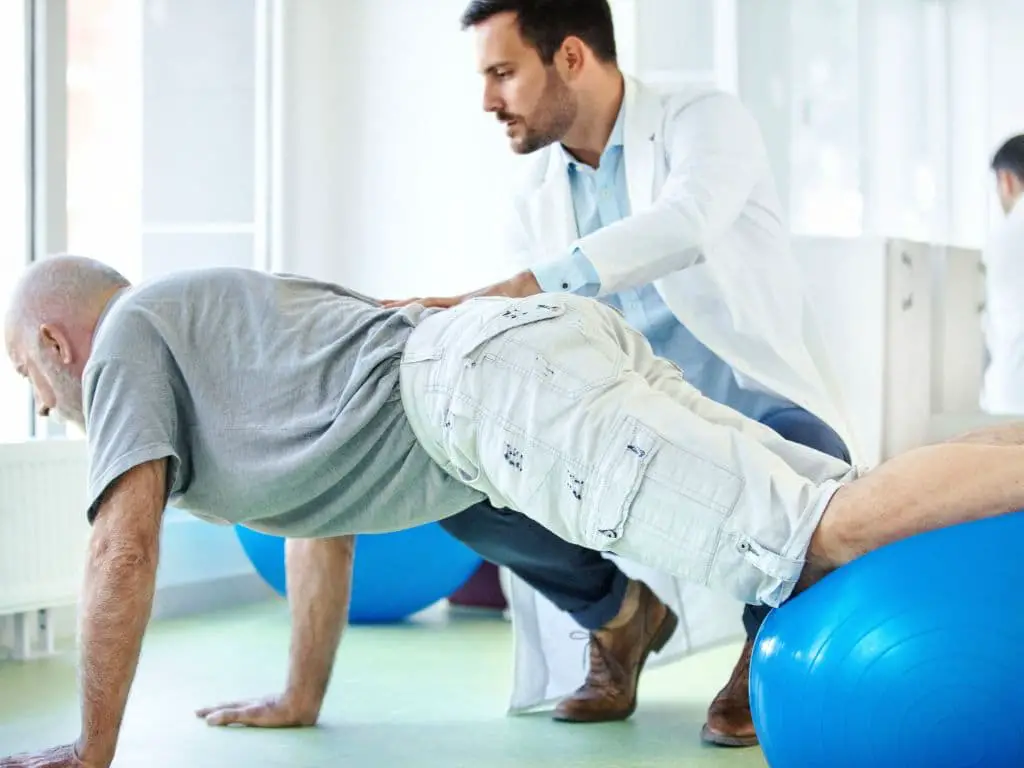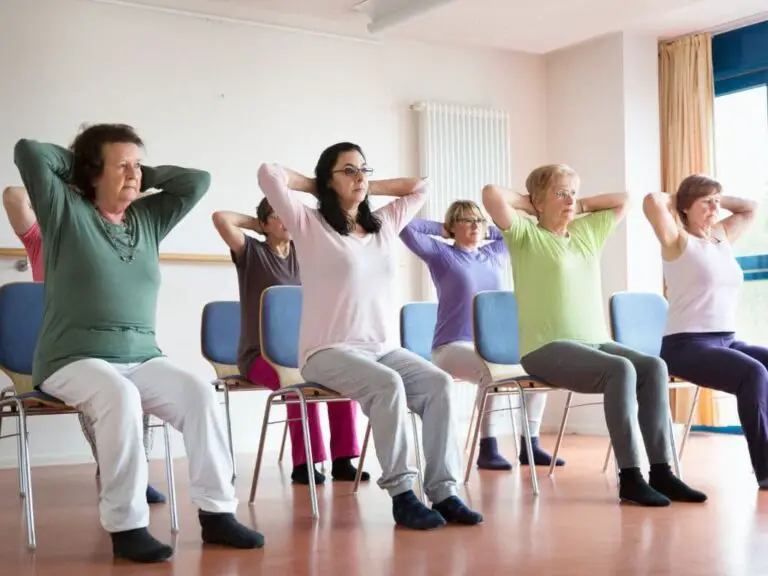Can You Lift Weights With Sciatica?
Sciatica is characterized by pain that radiates along the path of the sciatic nerve, which branches from the lower back through the hips and buttocks and down each leg. There are several underlying causes of sciatica:
- Herniated disc (slipped disc): When a disc between the vertebrae of the spine ruptures, it can put pressure on the sciatic nerve. This is one of the most common causes of sciatica.
- Degenerative disc disease: Wear and tear on the spinal discs from aging can cause them to break down, bulge or herniate, pinching the sciatic nerve.
- Spinal stenosis: Narrowing of the spinal canal puts pressure on the sciatic nerve. Stenosis can result from aging, arthritis and disc degeneration.
- Piriformis syndrome: The piriformis muscle located deep in the buttocks can spasm and irritate the sciatic nerve if it tightens or goes into a spasm.
Can you lift weights with Sciatica? Lifting weights with sciatica can be risky, especially for seniors, due to the possibility of exacerbating nerve pain and other symptoms. Certain high-impact exercises such as deadlifts, military presses, and squats can impose excess strain on an already aggravated sciatic nerve. However, if approached cautiously with light weights and a focus on gentle, restorative exercises like pelvic tilts, hamstring stretches, and core strengthening, it can potentially aid in alleviating discomfort and improving flexibility.
Common symptoms associated with sciatica include:
- Radiating pain from the lower back down the back of the leg
- Numbness or muscle weakness along the nerve pathway
- Tingling or burning sensation down the leg
- Difficulty moving the leg or foot
- Constant pain that is worse when sitting
- Shooting pain with certain movements or positions

Weight Lifting With Sciatica
For seniors suffering from sciatica, engaging in weight lifting exercises carries some inherent risks and complexities that require caution. The strain of lifting heavy weights can potentially compress or aggravate the sciatic nerve, worsening nerve pain and other symptoms.
However, safely incorporating certain low-impact strength training exercises can also help alleviate sciatica discomfort. It’s important for seniors to understand how to balance these considerations when exercising with sciatica.
What is the Risk of Weight Lifting for Seniors with Sciatica?
Seniors who wish to lift weights while coping with a herniated disc, bulging disc, spinal stenosis or other sciatica-related condition need to be very careful. The excessive strain of common weight lifting moves can place additional stress on the lower back and sciatic nerve.
Some potentially problematic exercises include:
- Deadlifts – Lifting heavy weights off the floor using the back muscles.
- Military presses – Lifting weights overhead while standing. Can compress the discs.
- Squats – With the weight resting on the shoulders, going deep with knees bent can pinch nerves.
Maximizing weights too soon or using improper form on these and other exercises can impose risky strain on an already aggravated sciatic nerve.
What are the Right Exercises for Seniors with Sciatica?
While some weight lifting moves should be avoided or minimized, certain exercises can aid in gently relieving sciatica discomfort and regaining flexibility. Key options to explore include:
- Hamstring stretches – Gentle stretching helps relieve nerve pressure. Hold each stretch for at least 30 seconds. Avoid overstretching.
- Pelvic tilts – Lying down with knees bent, gently tilt the pelvis to stretch the lower back.
- Core strengthening – Building abdominal muscles provides more lumbar support and stability.
- Yoga/flexibility exercises – Gentle yoga can relax muscles and take pressure off pinched nerves.
Starting with very light weights and reps is crucial to gauge pain levels and determine appropriate exercises.
Incorporating Safe Weight Lifting Exercises
When dealing with sciatica, the goal should be reducing nerve aggravation and improving flexibility. Some beneficial strength training exercises include:
Bent-over rows
- Holding light weights, bend knees slightly and hinge forward at hips. Keep back straight.
- Slowly raise elbows out to sides, squeezing shoulder blades together.
Bridge exercises
- Lying on back with knees bent, engage core and lift hips off floor.
- Don’t overarch lower back. Slowly lower hips to start position.
Modified crunches/sit-ups
- Bend knees, keeping feet flat on floor.
- Place hands behind head. Lift shoulder blades off floor, avoiding straining neck forward.
Seated hamstring stretches
- Sitting upright, extend one leg straight out with slight bend in knee.
- Lean forward at hip while keeping back straight until stretch is felt in back of thigh.
This selection of gentle exercises can help strengthen the core and back muscles that support the spine, reducing pressure on compressed nerves. But it’s essential to start with very low weight and reps to gauge body responses. Stop immediately if any exercise causes increased leg or back pain.
What is the Role of Physical Therapy in Managing Sciatica Pain?
It’s highly advisable for seniors with sciatica to consult a physical therapist or doctor experienced in treating sciatica patients prior to attempting new exercises or weight lifting. A customized exercise prescription based on a thorough functional assessment of the individual’s condition, range of motion and abilities will yield the best and safest results.
Under their guidance, non-weight bearing exercises, stretches, and very light strength training can aid recovery. Potential benefits include:
- Learning proper exercise techniques to avoid strain
- Improving flexibility and range of motion
- Strengthening core and stabilizing muscles
- Reducing nerve compression
- Relieving muscle tension around sciatic nerve
- Improving overall function and mobility
The Importance of Proper Seating for Sciatica Pain Relief
In addition to gentle exercise like targeted stretches and light strength training, paying attention to proper seating and posture is also very beneficial for managing sciatica discomfort. Sitting for long periods can worsen pain and compression in the lower back and aggravated nerve.
Some tips for more sciatica-friendly seating include:
- Using an ergonomic desk chair with good lumbar support to maintain the natural curve of the lower back. Adjust the seat height and backrest to support proper alignment.
- Sitting on a small, firm cushion or wedge seat can tilt the pelvis slightly forward into a better position, taking pressure off the sciatic nerve.
- Take regular breaks from extended sitting throughout the day. Stand up, stretch, and walk around every 30 minutes if possible.
- Avoid slouching or hunching forward. Use lumbar support pillows in chairs and car seats if needed.
- When sitting, keep knees level or slightly lower than hips. Prop feet up on a foot rest if needed.
- Recline seat backs during breaks to gently decompress the spine and give lower back muscles a rest.
Paying attention to seating and postural alignment, in combination with a sciatica-friendly exercise routine, can help relieve nerve irritation. Consult a physical therapist to develop the ideal program customized for your needs and abilities. With the right balance of rest, movement and proper body mechanics, it is possible to effectively manage sciatic nerve pain.
Conclusion
While sciatica can be extremely painful, the right combination of rest, medication, targeted exercises and stretches can help control symptoms. Seniors can continue to improve their strength and fitness safely when tailored to their specific capacities and guided by medical experts.
But it’s essential to start very slowly and minimize any activities causing increased leg or back pain. With patience and by listening to your body, you can find the right balance between rest and exercise.






